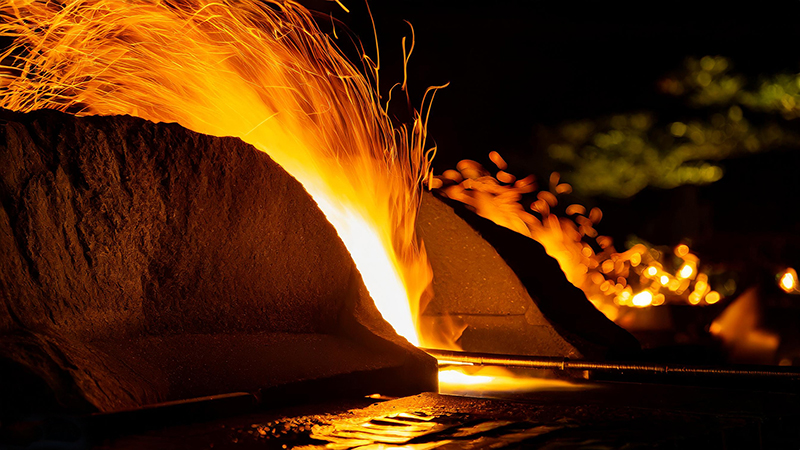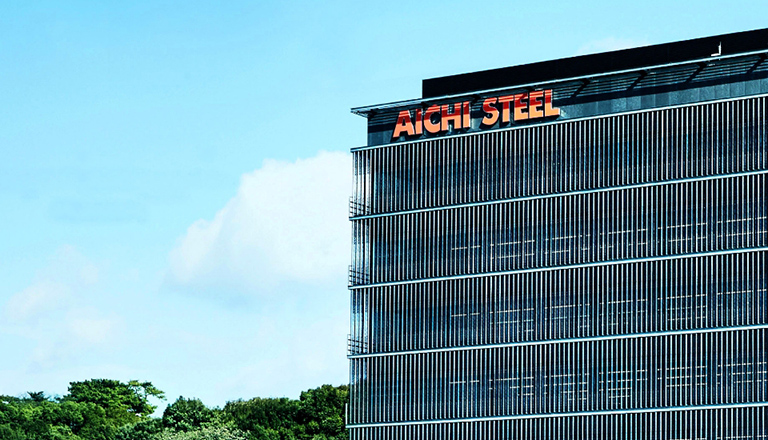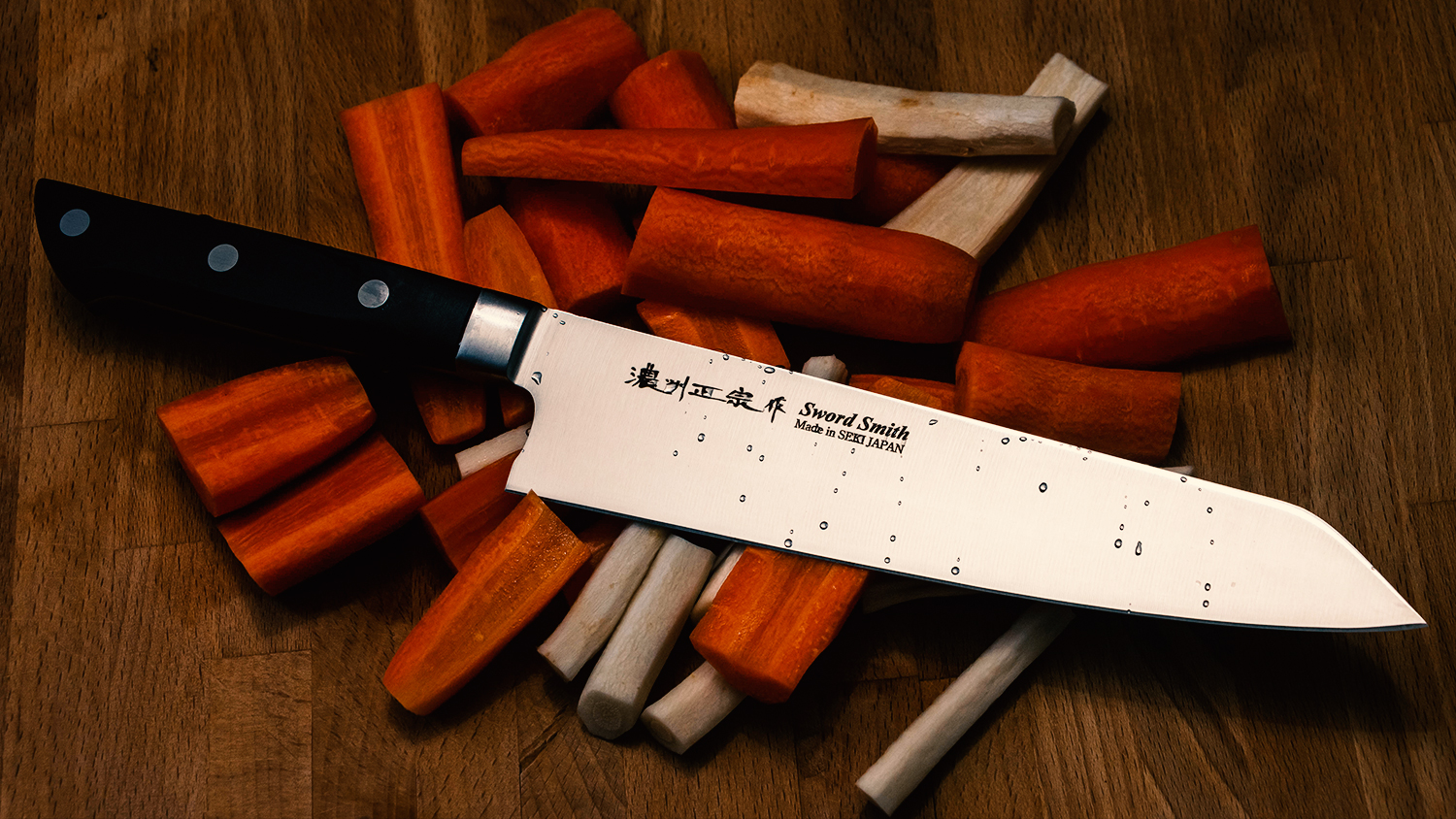AUS-8A Steel: Japanese Quality in the World of Kitchen Knives

AUS-8A Steel: The Workhorse of the Knife World – A Favorite for Satake Kitchen Knives!
AUS-8A steel is a true "workhorse" in the knife industry, highly valued worldwide for its reliability and excellent value for money. While it might not be the trendiest or most expensive steel on the market, it's popular among both knife manufacturers and users alike, thanks to its balanced properties. This is why the renowned Japanese knife manufacturer Satake, for example, often chooses this steel for many of its kitchen knives. Let's delve deeper into the history, composition, and performance of this versatile material!
The History
AUS-8A is a Japanese stainless steel developed by Aichi Steel Corporation. It emerged in the late 1970s and early 1980s when knife manufacturers were seeking a more affordable yet good-quality alternative to more expensive Western steels. Aichi Steel then introduced AUS-8, which quickly became popular among mass-produced knives due to its ease of machining, relatively simple sharpening, and adequate corrosion resistance. The "A" suffix in AUS-8A indicates that it is a refined version of the original AUS-8, providing better purity and a more uniform microstructure, which enhances performance and reliability. This reliability made it appealing to manufacturers like Satake, who targeted durable and easy-to-maintain kitchen knives for everyday use.

Composition
The properties of steel are fundamentally determined by its composition. AUS-8A is a martensitic stainless steel, meaning it can be hardened through heat treatment. Below is its typical chemical composition:
- Carbon (C): 0.70−0.75% This element is responsible for the steel's hardness and edge retention. For AUS-8A, this value is sufficient for the knife to maintain adequate sharpness.
- Chromium (Cr): 13.00−14.50% Chromium provides the stainless property and corrosion resistance. At least 10.5% chromium is needed for a steel to be classified as stainless. AUS-8A's high chromium content offers excellent resistance to rust and stains, which is essential for kitchen use where knives often come into contact with moisture and acids.
- Molybdenum (Mo): 0.10−0.30% Molybdenum increases the steel's toughness, wear resistance, and corrosion resistance, especially at high temperatures.
- Vanadium (V): 0.10−0.26% Vanadium improves the steel's edge retention and wear resistance by forming fine carbides within the structure. This contributes to better blade performance and a longer lifespan.
- Nickel (Ni): Max. 0.50% Nickel increases the steel's toughness and corrosion resistance.
- Manganese (Mn): 0.50−1.00% Manganese improves the steel's hardenability and strength, and aids in removing impurities during the manufacturing process.
- Silicon (Si): 0.50−1.00% Silicon also increases the steel's strength and elasticity.
- Phosphorus (P): Max. 0.04% Phosphorus is considered an impurity, and too high a proportion can make the steel brittle.
- Sulfur (S): Max. 0.03% Sulfur is also an impurity that impairs the steel's machinability and toughness.
Hardness
The hardness of AUS-8A steel typically ranges between 57−59 HRC (Rockwell Hardness), though this value may vary slightly depending on the manufacturer's heat treatment process. This hardness range is ideal for a general-purpose knife and perfectly aligns with Satake kitchen knives' philosophy:
- Not too soft: It's hard enough for the edge to be durable and resist deformation.
- Not too hard: It's flexible enough not to be brittle and can be sharpened relatively easily even at home. Sharpening overly hard steels can be much more challenging, which would be inconvenient for everyday use. This is precisely why Satake chooses AUS-8A, as this steel allows users to easily keep their knives sharp.
Durability and Performance
AUS-8A steel stands out for its balanced properties, making it popular among users, including Satake customers:
- Edge Retention: While it doesn't match the edge retention of super steels, AUS-8A maintains its sharpness for a long time with proper use and maintenance. The vanadium content helps improve this property, ensuring that Satake knives perform reliably in the kitchen.
- Sharpenability: This is one of its greatest advantages. AUS-8A is relatively easy to sharpen, even for beginners. This means the edge can be quickly restored if it starts to dull, which is particularly important for everyday kitchen knives. With this steel choice, Satake ensures that their knives are not only sharp when purchased but also easily kept sharp.
- Corrosion Resistance: Thanks to its high chromium content, it offers excellent resistance to rust and stains, making it ideal for kitchen knives, outdoor use, and work in humid environments. Satake kitchen knives retain their beauty and functionality even in a damp kitchen. It's important to note, however, that "stainless" doesn't mean "stain-proof"—proper maintenance, such as cleaning and drying, is still essential.
- Toughness: AUS-8A has good toughness, meaning it resists breaking and chipping during intensive use or impact. This is an important property for tools like knives, where the blade is often subjected to stress, such as when cutting bones or chopping harder ingredients.

Application Areas
AUS-8A steel is widely used for manufacturing various knives, including:
- Folding knives (EDC – Every Day Carry): Due to its reliability and easy maintenance, it's an excellent choice for everyday use knives.
- Kitchen knives: Its high corrosion resistance makes it ideal for food contact. This is precisely why Satake uses AUS-8A steel in many of its popular kitchen knife series. This steel is an ideal choice for everyday cooking, as it combines durability, easy sharpenability, and rust resistance.
- Survival and hunting knives: Its good toughness and resistance to environmental effects make it suitable for outdoor use.
- Tactical knives: Due to its reliability, it's often used for these types of blades.
CLICK HERE TO VIEW SATAKE CHEF'S KNIVES MADE FROM AUS-8A STEEL!
